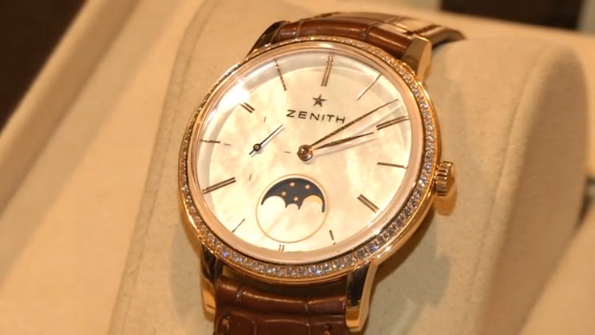
LE LOCLE, Switzerland (Reuters) – In two small Swiss towns, watchmakers are trying to strike a balance as delicate as the mechanisms in their precision-engineered watches – squeezing suppliers to cope with an industry crisis while preserving the skills that drove past successes.
Every gesture is precise, calibrated. And requires patience and dexterity. In 150-year-old Swiss luxury watchmaking manufacture Zenith, 250 people work each day to invent, design, assemble, decorate tiny mechanisms, or movements, into luxury watches known all over the world and worth several thousands dollars. Making just one watch of one of the best known model of the manufacture requires 9 months, 2,500 operations, realised by 300 pairs of hands.
Swiss watchmaking has for years been recognized all over the world but after the boom years earlier this century, life has got much harder. Demand for traditional luxury watches has been hammered by a Chinese government crackdown on bribery, a drop in tourist shoppers to Europe and, at lower price points, the rise of smartwatches.
And times have become more difficult for the Swiss watchmaking industry, which has been facing a lingering crisis since the beginning of 2015, the worst since 2008.
Manufacturers such as Zenith have been cutting prices in a bid to boost demand, which has hurt suppliers.
“Before what they called the “crisis”, a lot of watchmaking brands were totally crazy with prices, because of course some of the clients never challenged the value of the product they were buying. Now time is changing, we have to adapt. And if the others have a problem with the price-positionning, it is their problem”, Zenith’s Chief Executive Aldo Magada told Reuters at the manufacture’s headquarters in Le Locle. They reduced prices by 8 to 15% for 13 models.
To be able to offer complicated watches at more affordable prices, and to secure margins under pressure from a still high Swiss franc, brands have to put their suppliers under pressure, making more parts in-house or urging them to cut prices, resulting in cancelled orders at subcontractors.
In Le Locle-based watch dial maker Metalem, that counts Zenith, Chopard and IWC among its customers, sales fell 10% last year, and are expected to fall again 10% this year. According to its co-owner Alain Marietta, some brands have asked them to lower their prices by 15%. The 250 employees may have to work shorter hours in the second half of 2016.
“There is already break-in of employment in some subcontractors, or in some subcontractors of the subcontractors. There is already damage on the side of suppliers. And there will be more, in my opinion, yes. I just hope there won’t be too much”, said Alain Marietta.
According to the watch industry employers’ association, 1,000 jobs have been lost in the span of a year from more than 59,000 jobs in the Swiss watch industry.
In the neighbouring town of La Chaux-de-Fonds, which has the biggest network of watch industry subcontractors in Switzerland, and which with Le Locle constitutes a watchmaking area, the jobless rate of 8.1% in January was one of the highest in Switzerland, up from 7.8% a year ago.
A small subcontractor in La Chaux-de-Fonds, Horlyne employs around 30 people mastering the traditional decorative technique of oscillating weights, in which a precise, intricate patter is mechanically engraved into an underlying material. Company owner Raymond Leitenberg expects sales to fall 30-40% this year, and staff has started in March to work shorter hours, to face the crisis. He nevertheless has invested almost $630,000 in a last generation laser machine to be able to offer more innovative decoration for Horlyne’s flagship product, a watch component called “oscillating weights”. But he decided not to invest this year, and reserve this for 2017, a thing he had never done before. According to him, innovation and creativity are absolutely crucial to stand out against competitors, especially when times are hard. Without the first laser machine he bought two years ago, he wouldn’t have been able to honour half of his orders, and wouldn’t have survived in 2015.
“We know we have enough work for this year, but we know that if the crisis goes on for more than a year, we may not have the modern tools to offer our clients solutions, creations. So the risk is not on the mid-term, it is on the long term”, he said. Adding, and insisting, that challenging times were also an opportunity to prove even more creative and resourceful.







